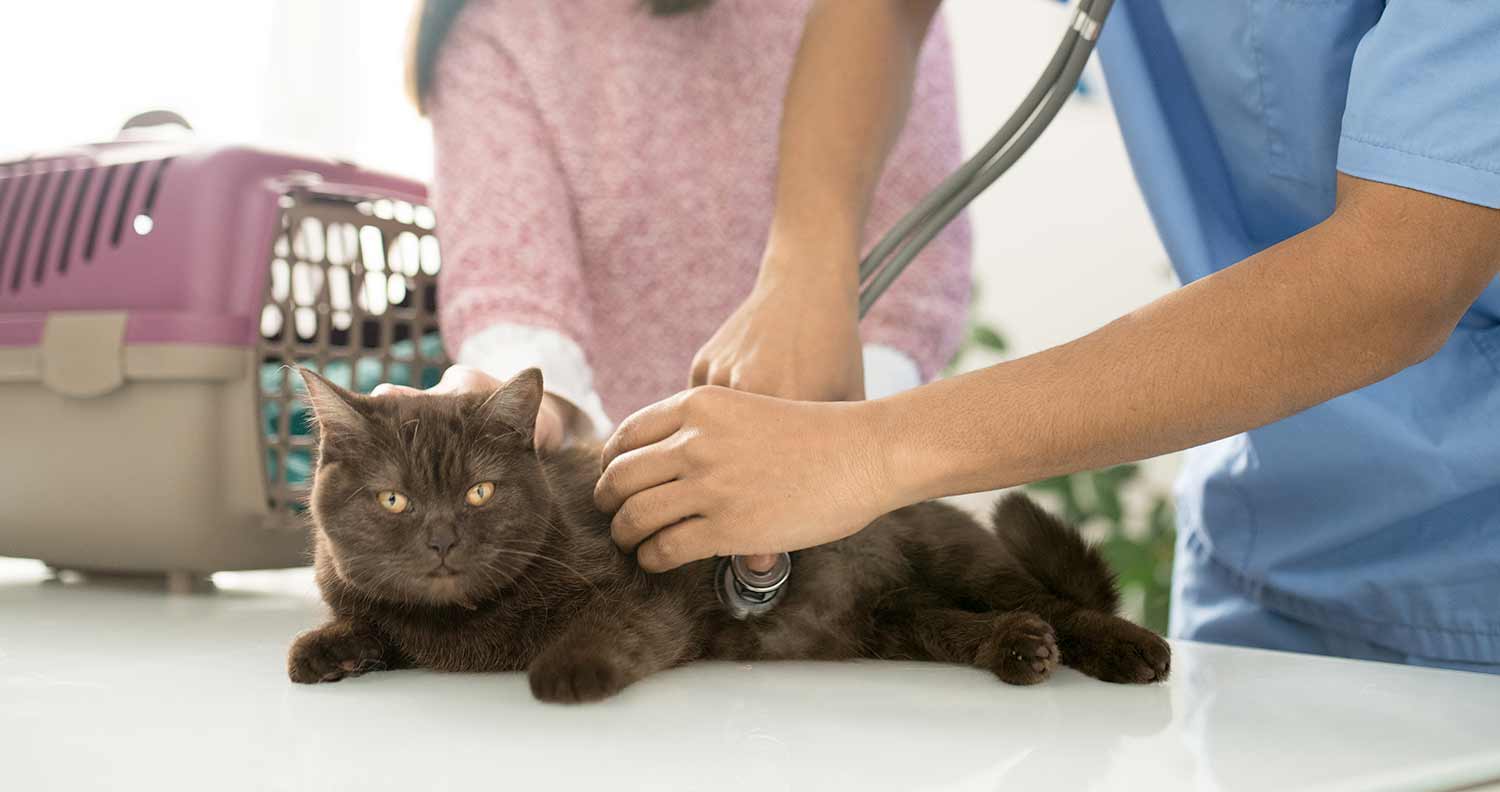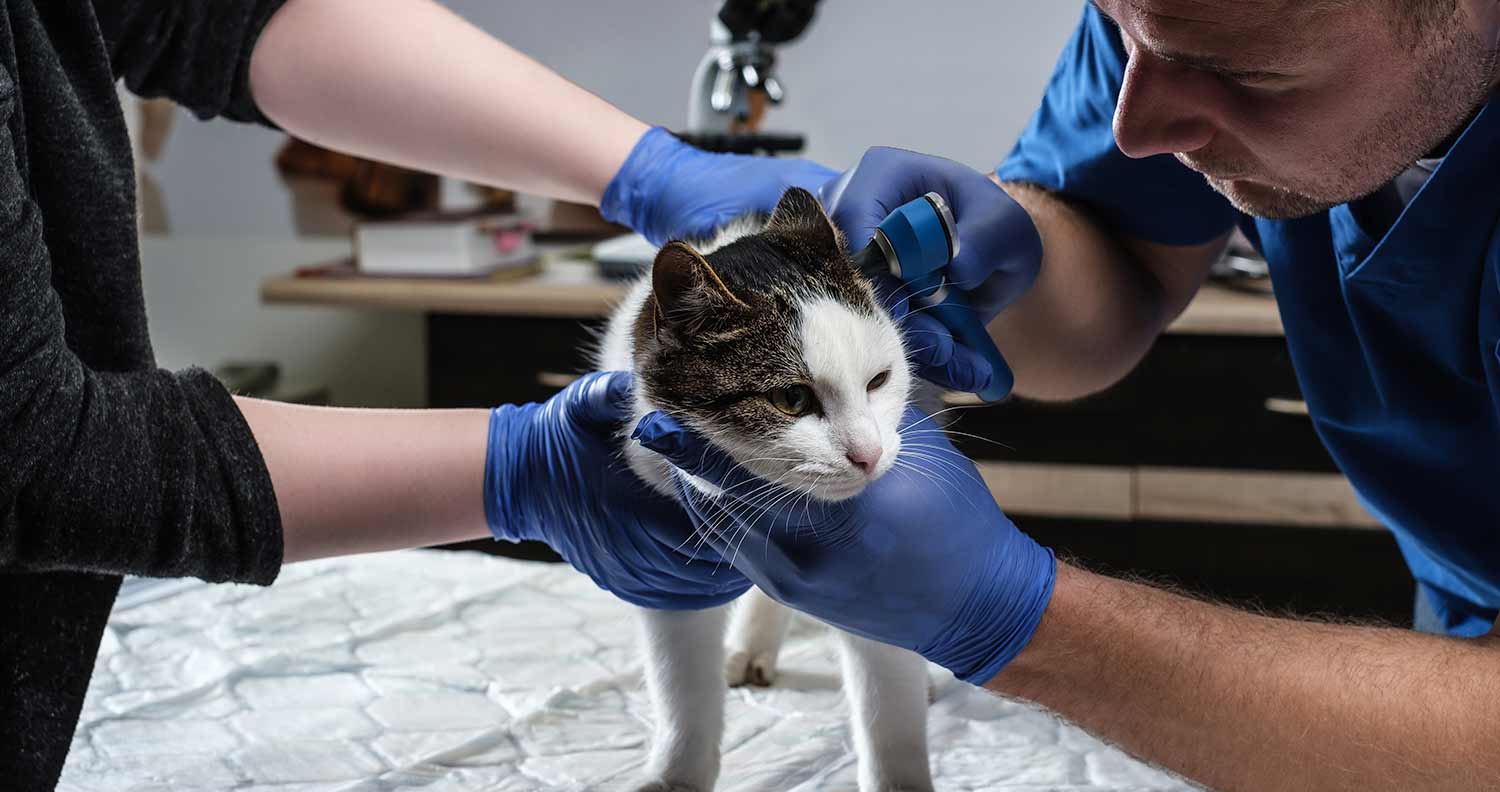No products in the cart.
Why Is My Cat Limping?
Share:
Have you just discovered your cat limping and you’re not sure what to do?
Fear not. We’ve talked to our experts and have the best advice for you to work out why you have a limping cat.
If your cat returned from her usual strolls with a limp in her leg,and now you’re worried if the lameness is temporary or permanent.
Of course, she can’t meow and point out whether it is a muscle, paw, or joint injury.
You need to know, “why is my cat limping?” Cats limp for various reasons and it is important for the pet parent to learn to help alleviate her distress. In this article, we will be discussing all probable reasons behind your kitty’s limping, signs that she needs immediate attention by a vet, how you can give her first aid, and what you can do to improve her condition.
Why Is My Cat Limping But Not In Pain?
Do not be fooled here, animals, especially cats, are incredibly good at ‘masking’ pain. In the wild cats do not like to show any signs of weakness as that could make them a target for a predator or enemy. If your cat is limping but still jumping around, they could well be in pain, do not ignore it.
Symptoms of lameness:
Reasons Why My Cat is Limping All of a Sudden
A lot of times, cats limp due to simple issues like something stuck in her paw or she overworked her muscles while chasing the squirrel up the tree. The first thing you need to do is to let her relax.
When she is relaxed and lying down, closely inspect her leg and paw for redness and swelling. Gently touch her paw pads and the area around to see if she flinches or meows with pain. If there is no foreign object stuck in her paw pad, the pain could be due to an ingrown nail.
Ingrown Nails
Ingrown nails can be really painful for a cat and may cause an infection. Cats with ingrown nails tend to lick one particular paw excessively and avoid walking on that foot.
You will be surprised to know how common it is for cats to get ingrown nails. As they grow, the claws can curve in such a way that the nail would dig back into the claw. Understandably, this is very painful for your furry feline and she will avoid putting her weight on the particular leg, causing a limp.
The biggest problem with detecting ingrown nails is that cats have fluffy feet making it difficult to see their claws. And as you guessed it right, cats are also not too keen on complaining about it. Try grabbing a look and more often than not, you will end up being scratched just like how my kitty ‘showers’ me with love upon these unwelcomed inspections.
Nevertheless, there are tricks, like distract them with toys and treats while you inspect their claw playfully. The silver lining is you can easily treat ingrown nails by clipping them. Some older cats might even have three to four ingrown nails at a time.
Clipping ingrown nails is a huge relief and the limp would go away soon as the wound, if any, heals. If you suspect an infection at the site of the ingrown nail digging into the claw, which is usually characterized by redness and pus, apply antiseptic lotion. Book an appointment with the vet to further treat it.
Several other common causes behind lameness in cats are fractures, infections, arthritis, and soft tissue injuries in muscles, tendons, or ligaments.
High Rise Syndrome
Ever seen a cute kitty purring while perched atop a tall tree? Well, most likely she is not purring but terrified because cats have a knack for inviting trouble thanks to their curious nature. I can’t tell you how many times my cat has been in an SOS situation while running after a squirrel.
Thankfully, she’s old and I am much more trained now to safeguard her from her own shenanigans but kitties sure do love inspecting things. Cats have excellent survival skills but a bird or any other prey can distract them easily making them lose balance and fall.
The high rise syndrome gets its name from the inherent lack of fear of heights in cats and their liking to sit at high points. If it is a tree, their claws can hold onto the branch but still, there’s a higher probability of falling.
However, concrete surfaces and window ledges don’t provide a good hold to a cat’s claws making them very likely to fall. This causes them injury in legs, thus giving a limp.
Another problem is their curious nature sometimes makes them even jump out of the window and fall. Hence, you need to make sure your windows are guarded by strong screens. Sometimes, jumping from a higher shelf can also injure them.
Does Arthritis Cause Cat Limping?
Lameness caused by arthritis is common in older cats. In fact, this is one of the telltale signs that there is something wrong with your cat’s joints. You may notice they no longer jump on or off from top shelves. Some walk stiffly due to the joint pain they experience.
There are several other glaring behavioral changes as well. For instance, you might often find their litter box lopsided. Almost like they deliberately turn it over. But this happens because your kitty finds it difficult to get in and out from the box due to joint pain.
You might also notice she no longer likes being petted and shows signs of discomfort when you handle her. General lethargy becomes a part of your kitty’s daily life.
All of these are symptoms of arthritis. It can be caused by aging, infection of the joint, or injury. Obese cats are more likely to develop this at a younger age because of the extra strain, put on their joints, by their increased weight.
The mechanism behind arthritis induced lameness is that the cartilage, which serves as a cushion between two bones at the joint, deteriorates or loses its flexibility due to age, injury, or infection. This makes it painful for the cat when she moves around and causes inflammation in joints.
You cannot self-diagnose arthritis at home. A vet will run various diagnostic tests including radiographs to determine if arthritis is indeed the reason behind your cat’s limping.
In case it is, replacing their food with ones that support joint health might help. Allow her to rest in low-to-the-ground spots. Medicate only as per the vet’s advice.
Why is My Cat Limping All of a Sudden? : Sprained or Pulled Muscles
Cats can sprain or pull their muscles while chasing prey, playing with each other, or even jumping from one shelf to the other. Overstretching during athletics like jumping, deep wounds, and fractures can also cause muscle tears that make it very painful for your kitty to walk.
The clinic signs of muscle tears are difficult to detect in case of mild strains and sprains. Limp could be the only possible way to diagnose. A thorough physical examination will reveal if there is swelling too.
There are tests to diagnose muscle tears. These include X Rays, MRI, and a blood test that measures CPK levels. CPK, or creatine phosphokinase, is a muscle enzyme that is released upon injury or tear. Its elevated levels confirm muscle injury.
In case it is a sprain, you will have to limit her exercise and free strolls. Keep her food and litter box near her. If needed, restrict her movement by keeping her in a crate. The more she rests, the better she will get.


Should I Take My Cat to the Vet for Limping?
Cats are mischievous and naughty, which means there are chances they may end up with traumatic injuries. Generally, fractures heal on their own as the cat is allowed to rest with a careful restriction on her movement.
However, some injuries can cause multiple damages to the bones and tissues. Your vet may decide to operate on her. She will be prescribed cage rest with strict guidelines you will need to follow to make sure she heals with minimum pain.
Please do not ignore your cat’s injuries even if she isn’t visibly complaining. Some traumatic injuries like broken bones need to be examined by the vet, in a timely manner, to ensure there’s no infection and the healing is on the right track.
Cat Limping Caused by Genetic Disorder and Hip Dysplasia
Although rare in most cats, some breeds are prone to genetic disorders like hip dysplasia. You might be surprised to know that cats can inherit this gene from both parents, even when none of them showed any sign of hip dysplasia. This is the one reason you should never get a cat from a backyard breeder.
Hip Dysplasia is characterized by the malformation of the socket and ball joint connecting your furry feline’s femur (thigh bone) to hips. This painful and uncomfortable orthopedic disorder causes the socket and the ball to be misaligned. Thus, your cat experiences pain while walking as the smooth movement of the femur bone is hindered.
Clinical symptoms include obvious limping, pain when you touch your cat’s hips, lethargy, and constant licking at the hip area.
Breeds with heavy bones, like the Persian and the Maine coons, are at a higher risk of developing hip and joint problems. Depending upon your cat’s age and health, the vet will take a call on whether surgery can help.
Certain anti-inflammatory drugs and dietary supplements prescribed by the vet might help alleviate your cat’s distress. Chondroitin and glucosamine are particularly helpful in strengthening the connective tissues of your kitty.
More often than not, your cat will need you to carefully manage things for her as surgery isn’t possible in the majority of cases.
Why is My Older Cat Limping?
This speaks for itself. Cats, just like humans, have issues with their bones and joints as they get older in years. Just be a little bit more aware of any limping and hobbles as they approach their kitty retirement years! And don’t mess around, get them to a vet for a check up if there is an issue.
First Aid for Your Limping Cat
Now that you know what causes limping in cats, it makes sense to learn how to give first aid. The first step would be to assess the gravity of the situation. Closely observe how your cat is walking with a limp.
Is she limping with just one leg? Is it left or right? Or, is there any problem with both the front and/ or hind legs?
Is your cat limping on their back leg or is it more that your cat limps on her front leg? Is she focused on limping on a front paw or a back paw?
You will also need to note if she is constantly limping or it comes and goes. Find out whether she drags her leg(s) only while walking but balances on all fours while standing still. Is it just a stumble or a constant phenomenon?


Get 30% off and FREE shipping on cat food!
U.S.A. only
To Find out why we recommend chewy.com, click here
These observations are necessary to know the severity of the condition. If the injury is acute, like a broken bone, your cat will be constantly in pain and dragging her feet. She won’t be using that particular leg even while standing still.
Cats are highly unlikely to walk on a dislocated joint. If your fur baby is in severe pain, do not examine her. It may be counterproductive and can even worsen the injury.
If the limp isn’t severe, examine her leg and paws closely. Look for foreign objects. If it is within your reach, remove it and clean the site with a good antibacterial soap. You can apply an antibiotic lotion to relieve swelling and pain. Epsom salt water foot soaks also work well.
In case of swelling accompanied by bruise or sprain, apply ice packs twice daily. You can use flowing water to promote healing and improve circulation.
The next important thing to remember is, no matter how tempted you are, do not wait it out to see if the limp goes away on its own. Sometimes cat owners feel the limp isn’t a big deal and wait a few days before making an appointment with the veterinarian. This could turn a smaller problem into a big one.
The vet will evaluate your cat through a physical examination and if needed, may recommend X rays to get to the root of the problem.
What Should I Do If My Cat is Limping?
I get it. Sometimes we get torn between scheduling an appointment with a vet or to wait and see if the limp improves, particularly in the case of mild ones. You can use the below pointers to determine if your cat needs to see a vet.
So, if you find yourself asking ‘what should i do if my cat is limping?’ and you’re not 100% happy that there is no underlying condition, then your answer is that you should take her to the vet.
In the end, the evaluation of the cause of why your cat is limping is best left to a veterinarian.
We know that’s not always an option, but if it is and you're concerned about why your cat has a limp, then you should turn to the expert.


Why is My Cat Limping? How to Help Your Cat
The vet, medicines, and therapy may put your cat back on her feet. Depending upon the severity of her condition she may or may not require a private room.
But the most important thing to remember while caring for your cat is that they tend to hide their pain. Give her special attention, a few extra cuddles, and the treats she loves. She might not show it but deep down she is thankful and relaxing.
Keep her litter box in an easily accessible spot such that she doesn’t have to walk around much or jump. Treat her with medicines prescribed by the doctor. Do not give over the counter human pain medicines to your cat. They can be toxic to them.
If your cat has ingrown nails, make sure you clip and trim them from time to time. Some cats are prone to ingrown nails, so you need to keep a constant eye. Again, if you notice that the nail is growing at a strange angle, do not self-treat. It could be a trauma to the nail bed or a case of broken nails.
Lameness caused by hip dysplasia might improve when you put your fur baby on the vet recommended diet and treatment. If your cat had surgery, monitor her appetite, water intake, and behavior. If you notice anything unusual, call the vet right away.
You might need to get an Elizabethan collar even for minor cases because cats have a tendency to lick and scratch the bandage or the sutures.
Inspect the surgical site or the cast closely. Any leakage, unusual smell, swelling, or skin rashes at the surgical site, or around it, needs to be reported to the vet.
Sometimes it is distressing for the cat as well as the owner to follow the cage rest instructions. Your fur baby might seem visibly upset and sad but trust us- cage rest is eventually good for her in the long run.
You can make this time bearable for her by keeping her toys in the cage. If she is shy, place the cage in a private corner or a quiet room. For outgoing cats who love the company, placing the cage in a high traffic area works well. She can watch all household activities from her cage and stay entertained.
Whether the injury is minor or major, remember to pamper your cat with daily grooming sessions. They love grooming- it is their favorite bonding activity. And the best part- you will catch them purring happily as your fingers run through their soft fur.
Purr kitty purr!


Get 30% off and FREE shipping on cat supplies!
U.S.A only
To Find out why we recommend chewy.com, click here
Affiliate disclosure : We Love Cats and Kittens is a participant in several affiliate programs including the Amazon Services LLC Associates Program, and the Chewy affiliate program. These are affiliate advertising programs designed to provide a means for sites to earn advertising fees by advertising and linking to products on their sites. If you click on links in our blog posts and articles we may be paid a commission.
Share: